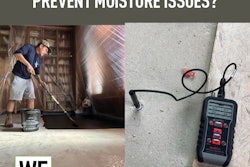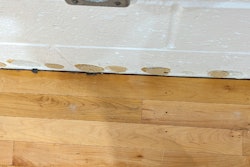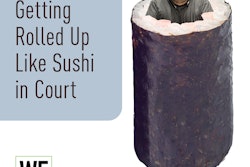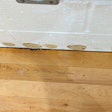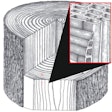Heat Wave
I have been hearing people talk about using thermally modified wood. What is it?
Charles Peterson, owner at Gales Ferry, Conn.-based CP Wood Floors, answers:
More thermally modified wood products are entering the market. These products have undergone a special heat treating process that reaches temperatures up to 215 degrees Celcius. This chemically alters the wood, which changes its properties. The higher the temperature, the darker the wood and the more stable, rot resistant and brittle it becomes. The process makes common species of wood more stable than teak and as rot-resistant as Western red cedar.
The treating process darkens the wood throughout the entire thickness of the piece. Hickory and ash look like ipé or ebony, maple and birch look like mahogany or teak, and oak looks like black walnut or wenge. Alder and aspen look like cherry, and spruce, pine and fir look like Western red cedar. The same wood species thermally modified at different temperatures creates an assortment of colors.
The thermal modification process reduces shrinking, swelling and cupping. The University of Minnesota, at the request of Attica Millworks, is researching how thermally modified wood behaves with changes in environmental conditions.
A few things to note: Because the wood becomes harder and more brittle, fine-toothed carbide-tip blades are preferred. Right now, the thermal modification process adds about a dollar a board foot in cost to wood flooring products.
Butting Against Tile
I have a job where engineered flooring will be butting up against tile with a curved radius. Can I just install the wood flooring flush against the tile?
Don Conner, technical director at the NWFA, answers:
With an engineered product, it's pretty often that you could get a job where the flooring is against ceramic, terrazzo, aluminum tracks, or another hard surface. There are several ways you can deal with this.
If it were my house, this is what I would do to make it look the most aesthetically pleasing: Before the wood flooring is installed, put a bead of silicone against the tile. The silicone will be exposed, filling about an 1/8-inch gap flush with the tile. You'll want colored silicone to match the floor—you can try to match the wood floor, but it's easier and your chances of it looking good are better if you match the grout color. Your flooring will be installed against the silicone, which gives you a little cushion. Before you install your flooring, though, you need to seal the exposed cuts with finish. I would use a little sandpaper to smooth off the rough finish at the cut, use a stain marker to touch up the stain where necessary, and then use a brush to apply finish to the cuts. If you don't seal the cuts, moisture introduced through normal maintenance can damage the floor and you'll see discoloration, splits, splinters, delamination, finish lift or gaps.
If you don't go this route, there are other options. If the radius is a standard shape and size, you could order a pre-bent wooden T-molding. Another option is flexible molding that looks like wood that can be stained and finished to match the floor. Or, you could use some 316-inch vinyl T-molding that snaps in place into the gap (although customers might find that the least attractive option).
The Guarantee Game
With all the various warranties offered today from prefinished flooring manufacturers, what can I offer to my customers as a sand-and-finish contractor to compete?
Craig Dupra, managing partner at Rochester, N.Y.-based Installers Warehouse, answers:
Factory finished floors today come with warranties that can last up to a lifetime! Although, with all the limitations written into those guarantees, I'm not sure that your customer will ever collect on them if they try to make a claim.
Any floor is only as good as the strength, integrity and commitment of the people standing behind it. You can't control how people choose to use or abuse their floors, and you are in no position to write the kind of language into a guarantee that big manufacturers can. But here's what you can do:
- Guarantee that all of the materials you provide are from top-quality manufacturers.
- Assure your customer that all work done by you is done in accordance with NWFA Guidelines.
- Guarantee that you will adhere to the manufacturers' guidelines on how much and how many coats to apply, and at what intervals.
Site-finished floors are a craft, making you a craftsman, not a manufacturer. Customers realize that custom work done in their home can have several advantages over purchasing a floor with finish factory-applied. Custom color and sheen, along with the lack of any type of bevel, make site-finished floors a classic. Taking pride in what you do, standing behind your work, and being there to touch something up or apply another coat of finish will go a long way toward assuring your customer that you are at least as good of a bet in the long run as any manufacturer's guarantee.














